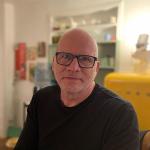Dr. Rashid Alleem, the United Arab Emirates’ (UAE) “Knowledge Ambassador,” chronicles the complex, multi-layered project management effort that fixed the Sharjah Electricity and Water Authority (SEWA).
The Impossible Project Made Possible
In this compelling project management case history, Dr. Rashid Alleem, the United Arab Emirates’ “Knowledge Ambassador,” details how he and his team transformed the culture and the infrastructure of the UAE’s Sharjah Electricity and Water Authority (SEWA).
A Myriad of Challenges
His Highness Sheikh Dr. Sultan Bin Mohammed Al Quasimi – who serves on the Supreme Council of the United Arab Emirates (UAE) and is president of Sharjah, the UAE’s third-largest city – appointed author Dr. Rashid Alleem to lead the Sharjah Electricity and Water Authority (SEWA). When Alleem came on board, with some trepidation, he found that SEWA needed a total transformation.
Transformation cannot happen without emotional investment. How will I frame my transformation game plan and present its road map? What will I do first? What are my top priorities?Dr. Rashid Alleem
SEWA’s challenges included inadequate investment from its sponsors, insufficient planning, inexperienced team members, and the escalating scale of the rehabilitation project itself. Alleem had to assemble a strong, relatively small, manageable leadership team. Reflecting on that experience, he advises that a workable, productive team should have a maximum of nine diverse, skilled people who share a passion for moving the company into the future.
Digging in at SEWA
Alleem launched SEWA’s transformation by establishing a participatory management structure that assigned decisions to people who had the appropriate knowledge or expertise. Project management leadership teams need intuitive, creative people who approach issues analytically and embrace atypical methods. Passion matters because passionate team members maintain their focus and energy. Alleem advises appointing team members with clear goals and a strong sense of purpose who can work independently to solve problems quickly.
Allem found that SEWA suffered serious financial and management issues, but he explains that effective project leaders often must figure out how to make do with the resources available. SEWA needed a fresh management team, additional funding, and defined goals with step-by-step paths to achievement, but even more, it needed a true vision.Leadership based on a true vision involves both the heart and the mind. The mind pursues detailed, skill-based tasks, such as managing crucial departments. The heart shapes the character of the system. True visionary leaders define the project’s character as well as its objectives, timelines, and resources.
As a leader, my role is all about engaging with employees at an emotional level. They have to see the change; they have to feel the change.Dr. Rashid Alleem
The SEWA Project Management Model calls for monitoring every stage of the process and gathering the right data. Alleem cautions that no one can make sound decisions without proper, current monitoring information.
“Ecomagination”
The SEWA project management model progresses through five phases: “imagineering, ecomagination, critical thinking, execution, and knowledge capture and storage.” Each phase is self-contained, with its own required activities, knowledge, and skills.
The combination of imagination and engineering – the right and left brain – aids managers in all aspects of the project. Learning before you act is a core principle of the SEWA Project Management Model.
The project management team initiates the project. Initiation requires articulating the project’s purpose, feasibility, scope, and nature. The initiation phase includes assessing whether the project has sufficient support and deciding who will execute it.
Before Alleem’s became its leader, SEWA paid little heed to the environmental impact of its power-generating plants. The project began its second phase, ecomagination, by upgrading SEWA’s power-generation infrastructure – a relatively early step in its transformation. Under Alleem’s leadership, it focused on sustainability as an important goal. The new power-generating facilities are sophisticated, efficient, and productive.
This improved machinery exemplifies ecomagination. The ecomagination phase of the SEWA project management model requires a company and its leaders to exhibit significant environmental awareness and to work with other firms and suppliers that share similar values. The company must innovate flexibly and opportunistically, stay lean, and exploit advanced technologies. The SEWA project pursued an overarching goal that the company shares with its partners: a clean, sustainable future.
Different project activities demand different thinking modes, both analytical and intuitive. Some projects demand linear, analytical, quantitative thinking. Others require a less linear, more multidisciplinary thinking style.
The SEWA Project Management Model combines these elements under the title “CRITRAL thinking,” which calls for a multifaceted philosophy. CRITRAL thinking helps leaders and managers see new possibilities instead of obstacles. It helps people describe their problems and failures in a way that opens more future potential. Project management personnel work and think in teams, and benefit from the synergy that emerges when team members bounce ideas off one another and inspire their colleagues to conceptualize entirely new ideas.
A design-thinking methodology complements the CRITRAL philosophy. Design thinking delves into everything an organization does to accommodate its customers, including having empathy for their issues, while addressing its own limitations and solving its business problems.
Delivering On Goals
The earlier phases of the project management model ramp up toward delivering on the project’s goals. More than half the work outlined in the SEWA Project Management Model takes place during the execution stage, when project managers divide large undertakings into segments for easier management and pursue their completion.
Being a sustainalist (a sustainability specialist), I infused an eco-friendly and environmental psyche in all the functional and manufacturing units of SEWA. Therefore, we adapted the ecomagination philosophy.Dr. Rashid Alleem
As a project finishes slice by slice, its sponsoring organization often requires detailed documentation of the lessons learned before, during, and after the project. SEWA calls this fine-grained documentation a “Knowledge Management System,” or KMS. Creating your KMS may require using high-end digital technology to enable your team to identify and document the intellectual assets of the project and the organization, thus preserving its methods and knowledge, so they will be available in the future.
Your project management team must want to learn. SEWA emphasizes that learning is a never-ending process. Those who adopt this project management strategy learn continuously over the life of the project.
Valuable strategies
Dr. Rashid Alleem — also the author of Is Success A Sin? and Harmony in Difference — shares every step of a daunting, multi-faceted project in this conversational, practical manual. Handling such a daunting project, he asserts, means immediately shouldering responsibility and embracing the leadership role. Alleem offers valuable, detailed strategies for navigating a complex, difficult, and time-sensitive project. His unpretentious, direct, authorial voice is among the several remarkable aspects of his depiction of this Herculean task. His mission is to help every project manager understand how to grapple effectively and simultaneously with multiple problems and diverse people. He succeeds admirably.






